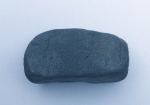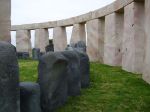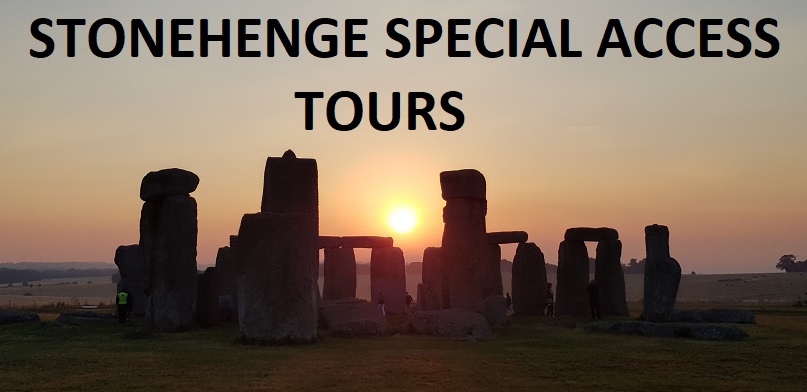WHY transport more than 80 two- tonne megaliths over 156 miles of mountain, river and sea to build a stone circle at Stonehenge? It hasremained one of Britain’s most enduring mysteries. Some have claimed the iconic site on Salisbury Plain was an ancient observatory for lunar and solar events. Others claimed it was a burial site for the high-born while Arthurian legend has it Merlin transported the stones. But now a Welshman from Pembrokeshire, the place where many believe the stones originate, claims he has the answer. Professor Geoffrey Wainwright, an honorary fellow of Lampeter and Cardiff Universities, released findings yesterday to support a theory that Stonehenge was a “prehistoric Lourdes”. The findings suggesting its significance as a healing centre for pilgrims were made in a historic dig at the World Heritage Site earlier this year. The first excavation of Stonehenge for more than 40 years uncovered fragments of stone which experts believe could have been used as lucky charms. Professor Wainwright believes that Stonehenge was a centre of healing to which the sick and injured travelled from far and wide, to be healed “by the powers of the bluestones”. He noted during the dig that “an abnormal number” of the bodies found in tombs near Stonehenge displayed signs of serious physical injury and disease. And analysis of teeth recovered from graves show that around half of the corpses were from people who were not native to the Stonehenge area. Archaeology expert Professor Wainwright, chairman of the Society of Antiquaries of London, and Professor Tim Darvill of Bournemouth University, have been working together for years to find out why Stonehenge was built. English Heritage agreed to the dig on Salisbury Plain, the first since 1964, following consent by the Secretary of State for Culture, Media and Sport. The academics said they could now pinpoint the date at which the blue stones – which the archaeologists believe hold the key to Stonehenge – were brought to the site in Wiltshire from West Wales, as 2300BC, 300 years later than previously thought. The stones were once believed to have come from a crag in the Preseli Hills called Carn Menyn. But a newer theory is that they were brought from glacial deposits much nearer the site, which had been carried down from the northern side of the Preselis to southern England by the Irish Sea Glacier. The professors also told a press conference at the Society of Antiquaries in London that people remained interested in the magical, healing qualities of the stones for many hundreds of years after Stonehenge was built. Prof Darvill said: “It could have been a temple at the same time as it was a healing centre, just as Lourdes is a religious centre.” Prof Darvill suggested the blue stones, which have tiny white spots, could have acted in a similar way to the bones of saints. They argued that as thousands of pilgrims flocked to see them at Stonehenge the resulting wealth enabled an “elaborate shell” of more stone pillars to be built. Prof Wainwright said he was inspired to investigate the area in his native Pembrokeshire while watching a television programme about why Stonehenge was built. He said: “I thought the answer really had to be found in the place where the stones came from. That is in north Pembrokeshire, so Tim and I went and did a survey around the crag. “We found various reasons which led us to believe the stones were used as part of a belief in a healing process.” But he said they needed to study the Stonehenge site to find out when the bluestones arrived there and how long they were used. The radiocarbon dating of the original double bluestone circle held significance for the start of Stonehenge being used as a healing centre. The date – 2300BC – links the introduction of the bluestones with a time of great activity at the site, including the death of the Amesbury archer. His remains were discovered about five miles from Stonehenge and the professors believe he was a pilgrim hoping to benefit from the healing powers of the monument. Prof Wainwright said: “We now know, much to our surprise and delight, that Stonehenge was not just a prehistoric monument, it was a Roman and medi- aeval monument.” Were the huge stones transported all the way from West Wales? The stone pillars of Stonehenge are natural columns of white spotted dolerite and occur only in the Preseli Hills’ Carn Menyn area. They were first identified as of Welsh origin by Dr John HH Thomas in 1923. Archaeologists have uncovered the remains of a “band of brothers” found near Stonehenge and scientists have proved they were Welsh, suggesting it was people from Pembrokeshire who actually transported them. The skeletons, three adults, a teenager and three children, were found by workmen laying a pipe on Boscombe Down and chemical analysis of their teeth revealed they were brought up in the South West Wales area. Experts believed the family accompanied the stones on their epic journey from the Preseli Hills to Salisbury Plain. As an extension of the theory that Stonehenge was a healing centre, on digs around the country, archaeologists will now look for any evidence of bluestone being transported from Wales to other monuments. Professors Wainwright and Darvill also said they hope to return to the Preseli Hills next year to excavate part of a burial mound near the main bluestone outcrops. Prof Darvill said of the bluestones: “Their meaning and importance to prehistoric people was sufficiently powerful to warrant the investment of time, effort and resources to move the bluestones from the Preseli Hills of Wales to the Wessex downs.”#
Merlin @ Stonehenge
Stonehenge Stone Circle
















Leave a comment